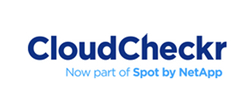Tuesday, October 29, 2024 by Shelley Hirst
A thriving sales pipeline is the heartbeat of any business. When your pipeline shows signs of slowing down or could use a boost, it’s a clear signal to review results and consider adjusting your approach.
Whether you’re nearing the end of FY24 race or at a mid-year pitstop, there’s always an opportunity to rethink and refine your strategy to get back on track for success. Instead of resorting to quick fixes like discounts or free trials, consider proactive, strategic steps that will rejuvenate your pipeline for the long term.
If you’re a sales or marketing leader involved in driving direct or channel sales, there may be some nuggets here that will aid your thought-process.
Buyers are more informed
Today's buyers are more informed and independent than ever. They’re researching products and services long before they engage with a sales rep. Studies show that 70% of buyers conduct their own research before initiating a sales conversation.
This shift in buyer behaviour presents an exciting challenge: crafting a pipeline-building strategy that’s both smart and subtle, guiding potential customers seamlessly through their journey.
You know it! Recognising and adapting to this shift is a key step toward success.
Be clear about what you’re selling
It might seem obvious—you know what you’re selling. But do you really understand what buyers want to buy? Factors like innovation, competitive landscape, and market maturity all influence buyer preferences. It’s not enough to take an inside-out view or assume that what works in one region will work in another. Tailoring your approach to meet the actual needs and challenges of your buyers wherever they inhabit, is crucial.
Planning and budgeting
So, where do we start? A solid plan is essential—one that includes tailored market strategies, considers maturity models and competitive landscapes, and aligns with sales cycles, average deal values, success metrics, and ROI. Content should be abundant yet purpose-driven, designed to support these goals.
Budgeting is another critical component. Every pound spent should be measurable and tied to clear, strategic objectives that align with your sales goals. It’s sometimes necessary to break free from traditional norms and focus on what works specifically for your business.
Data is more valuable than oil
Let’s make the most of the tools at our disposal. Data isn’t just a buzzword—it’s a powerful asset. However, many businesses lack focus on ensuring data is up to date, relevant, compliant, and continually enriched. This requires ongoing maintenance rather than an annual refresh.
Content with purpose
Content should align perfectly with the buyer's journey. Surprisingly, 48% of marketers struggle to produce, syndicate, and curate content that’s flexible enough to meets the needs buyers are demonstrating and gleaned from data-driven insights. By bridging this gap, you can unlock new opportunities and optimise your resources.
Inefficient lead management
Speaking of resources, they need to be used wisely. Did you know that 25% of marketing budgets are lost due to inefficient lead management? A key challenge here is the alignment between sales and marketing. Too often, leads are handed off to sales prematurely, leading to missed connections and lost opportunities.
Persistence is also key—48% of sales teams give up after just one attempt to reach a lead, often because they don’t see value in further attempts. In today’s market, this approach won’t cut it.
Buyers are in control
Today’s buyers are savvy and have developed ways to avoid initial contact, making it essential to nurture relationships before making your move. The right time to reach out is when you’ve built trust, provided value, and turned the lead into a warm prospect. The phone is still a powerful tool, but it’s all about timing and strategy.
Martech – if you’ve got it, flaunt it
By leveraging martech and systems that track buyer intent and sales progress, you can turn wasted spend into high-impact investment. However, 70% of businesses aren’t fully utilising their martech tools. If this sounds familiar, it’s time to reassess and fine-tune your approach.
Challenges for smaller businesses
For smaller businesses, the challenge often lies in not having the resources or specialised skills to develop and implement these strategies. Limited budgets and lean teams can make it difficult to manage everything in-house, from data analysis to content creation. However, even with these constraints, these businesses can still make significant strides by focusing on core strengths and leveraging outsourced expertise where needed. The key is to prioritise efforts that deliver the highest impact.
Big businesses: Comprehensive programmes
Larger businesses, on the other hand, often have the resources but face the complexity of managing multiple initiatives across different markets. For these organisations, the need is for comprehensive programmes that can efficiently handle everything from data collection and analysis to content creation and lead nurturing and return them as actionable sales leads, ensuring every interaction is maximised and the resulting sales pipeline is robust.
Key takeaways
In a nutshell, here are the key components that will energise your sales pipeline:
1. Address pipeline challenges with a strategic mindset rather than relying on quick fixes.
2. Integrate data-driven insights with a thoughtful approach to pipeline building.
3. Develop purposeful content that aligns with each stage of the buyer’s journey.
4. Foster strong collaboration between sales and marketing teams.
5. Focus on long-term relationship building over short-term gains.
6. Optimise the use of martech to track buyer intent and sales progress.
7. Be persistent in sales—one attempt is rarely enough.
8. Size doesn’t matter, any business needs a robust pipeline
It’s not just about closing deals—it’s about cultivating lasting relationships that fuel long-term success. By embracing a strategic, buyer-centric approach to pipeline building, you can create a more effective and efficient sales process.
If you like this, read the next instalment “The Modern Buyer: Masters of Call Dodging"
Frequently Asked Questions
Market Activation identifies in-market buyers (via intent data, behavioural signals) and immediately engages them with tailored outreach (nurture tracks, one-to-one advisor sessions, community invites).
Demand Engine: Targeted outreach (email, ads, sponsorships) that scores clicks → qualified leads → sales-ready appointments.
Performance Dashboard: Real-time visibility into open rates, CTOR, CPL and lead progression via our online sales portal.
Content Amplification: Thought leadership shared in The Amigos Network drives deeper engagement and social proof.
Peer Validation: Prospects get candid feedback from peers on your solutions, shortening the evaluation cycle.
Pipeline Catalysis: Warm introductions and referral paths within the community fuel high- intent conversations.
- Top-of-Funnel: Build credibility through community content and events.
- Mid-Funnel: Leverage peer case studies, expert Q&As, and live demos to answer deep technical questions.
- Bottom-of-Funnel: Invite high-intent members to advisory councils or private 1:1 sessions, often the final nudge before purchase.
- Interesting content: We originate, curate, and syndicate different types of content we know our audiences want to engage with and tell them it’s there.
- Sponsored content: We use sponsored content to drive engagement with individual brands.
- Promotion: We promote that content via multiple channels such as email, social media, YouTube, and so on.
- Identification: We ingest company-level engagement signals and combine it with known contacts that may be researching key topics.
- Segmentation: Members are bucketed by level of intent (high, medium, low) plus ICP fit and company size.
- Activation: High-intent members receive prioritised community invitations (events, focus groups, product deep-dives) to accelerate deals.
- Purchased data highlights who’s in-market.
- Community engagement reveals what questions they’re asking, so your nurture can be hyper-relevant.
- Result: A 2–3× lift in meeting acceptance and pipeline velocity vs. cold outreach alone.
- Marketing owns the nurture tracks, community invites, educational content, and event promos.
- Sales intervenes only at “high-intent + active community engagement” thresholds, with account-specific demos and peer introductions.
- Outcome: Fewer wasted calls and a higher win rate on truly qualified opportunities.
- Engagement Metrics: Community log-ins, event attendance, content downloads.
- Intent Conversion: % of intent-scored members who join private roundtables or request demos.
- Pipeline Velocity: Time from first community touch to opportunity creation.
- Revenue Impact: Contribution of community-sourced deals to overall bookings.
- Average Weekly Open Rate: 40%
- Average Weekly Click-to-Open Rate: 70%
- Average Cost-per-Lead: £45
- Minimum ROI: 500%
- Average Dwell Times: 1 minute 45 seconds




















